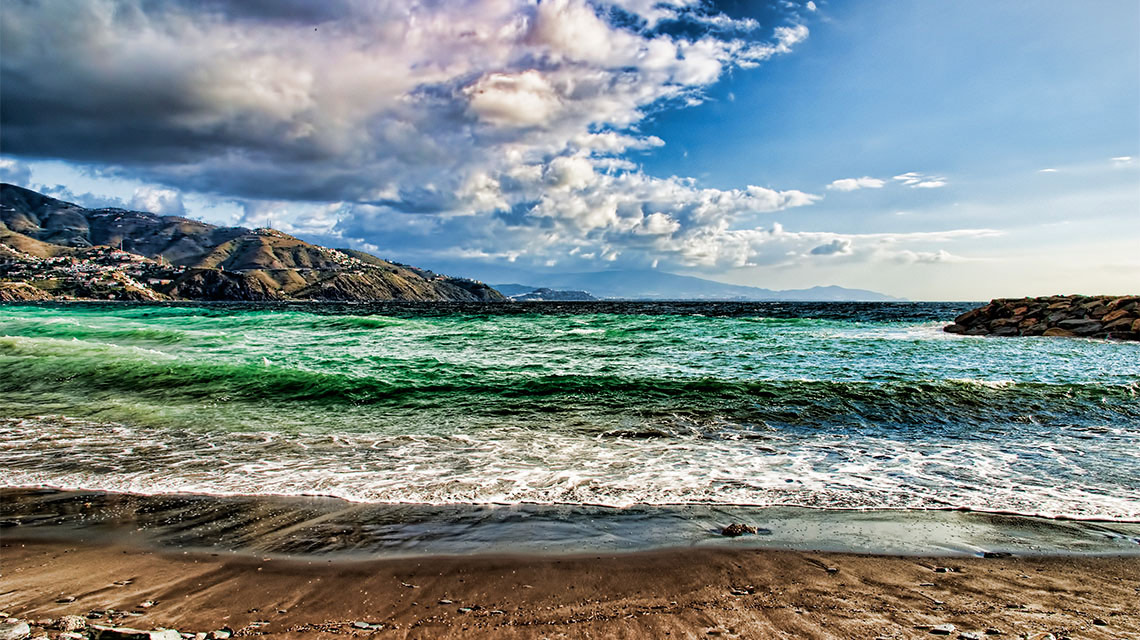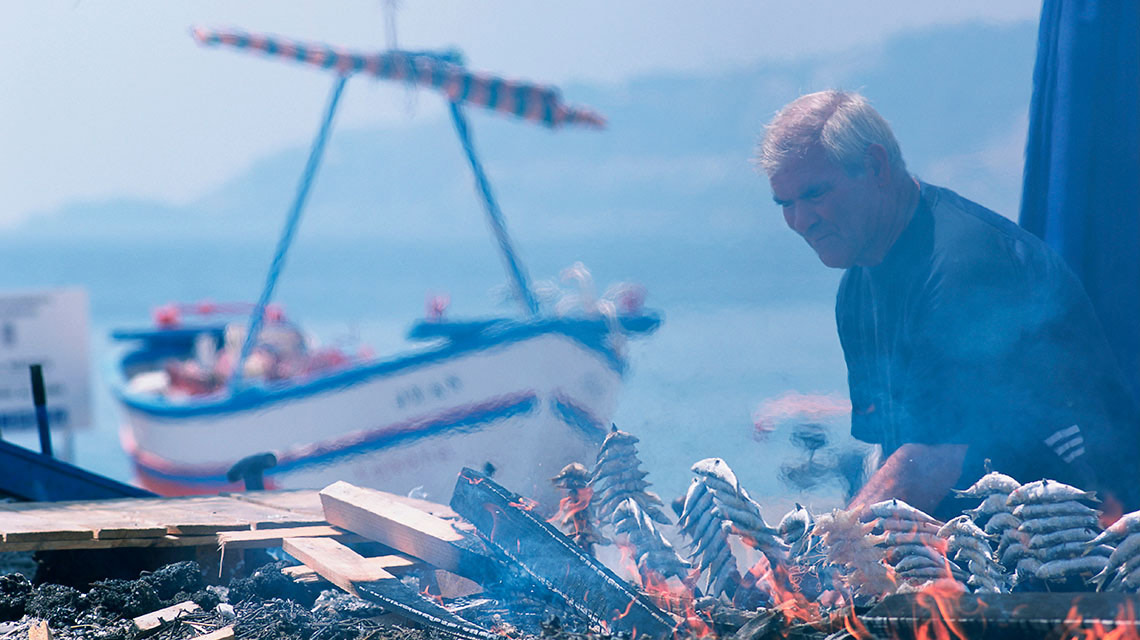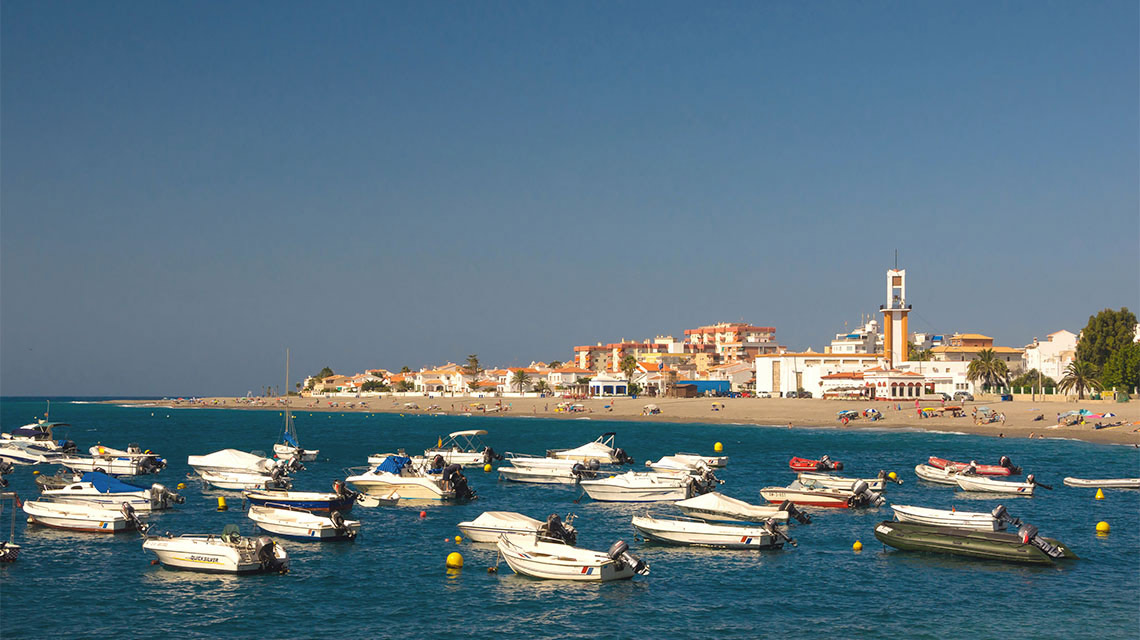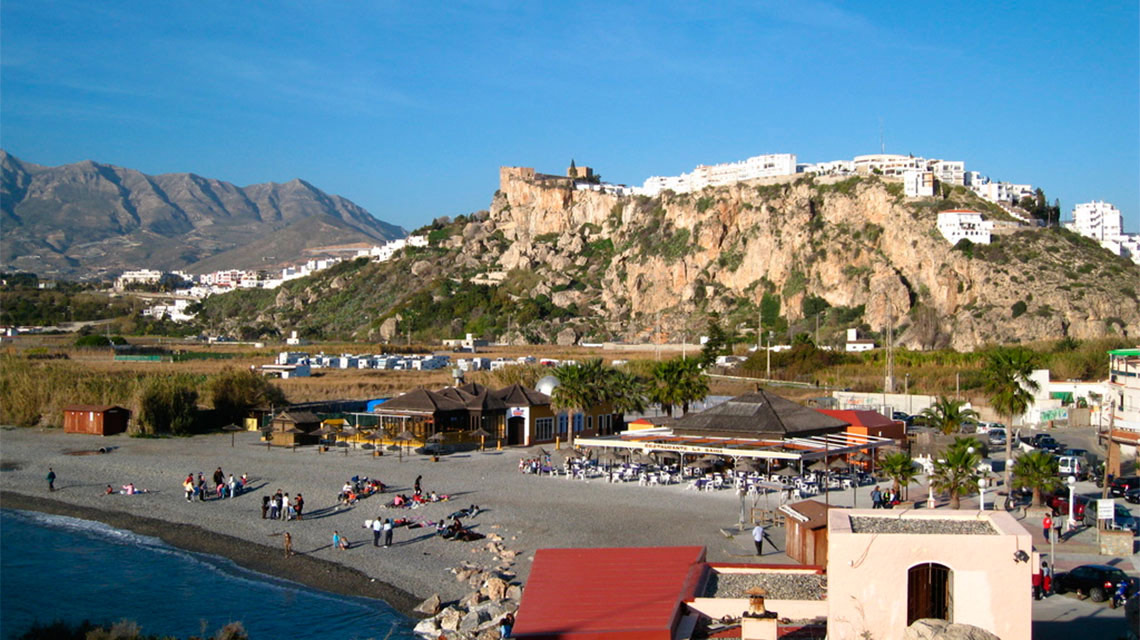Coves and long beaches within a 1-hour drive from La Almunia del Valle
The "Costa Tropical" - about 100 kms of beautiful coastline between the Costa del Sol and the Costa de Almeria - is ideal for a nice trip to the beach: Located at only 70kms from La Almunia del Valle, it takes not even one hour by car to get there.
Thanks to its proximity to northern Africa and the Sierra Nevada mountains (whose high peaks protect this coastline from cold winds from the north), this coast has a sub-tropical microclimate: About 320 sunny days a year and an average temperature of 20ºC make it possible to grow tropical fruits on the lush fertile plains.
Cliffs, coves, beaches and villages make up this beauiful landscape that was conquered and populated by many peoples, including Phoenicians, Romans and Arabs, who left traces of their cultures.
Among the villages and towns we would like to mention three: Almuñecar, Salobreña and Motril.
Almuñecar is one of the oldest towns on the this oast. Of Phoenician origin, the former Sexi brings together a rich archaeological and monumental heritage with excellent beaches suitable for swimming, diving and water sports. The old town is crowned by the Castillo de San Miguel, that may have been in the Punic period, but it was to become really important in the Nasrid period, when it was famous for its prison and dungeon. In 1808, it was bombarded by the English fleet. A highlight inside the castle is the Neo-classical pavilion, which is entirely different from the rest of the building.
Within the municipal area you might want to visit the village of La Herradura, located in a beautiful bay and offering one of the cleanest and richest seabeds of the Mediterranean coast.
Salobreña, also founded by the Phoenicians, offers an old town with narrow, white streets, set at the foot of a hill topped by an Arab castle. This Castle, a 13th century Moorish fortress, was used by the Nazari Kings as a summer residence and - like the Almuñecar castle - as a prison where they were detained members of the royal family. The view from the old fortress stretches over the fertile plain of Guadalfeo, blanketed with sugarcane plantations, as far as Sierra Nevada.
Motril is located on a hill and offers a great artistic heritage, in addition to lovely beaches. The old town is a typical example of Arab-Spanish urban development. The Iglesia de La Encarnación, built on top of an old mosque, is a Mudejar building from the 16th century. Baroque architecture can be admired at the building that houses the City Hall, and at the sanctuary of the Virgin of Cabeza (patron saint of the village), situated on a hill with stunning views. Its beaches of La Joya, Poniente and Carchuna, are also part of the wonderful charm of this town.





